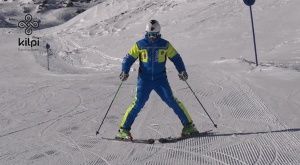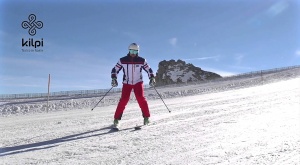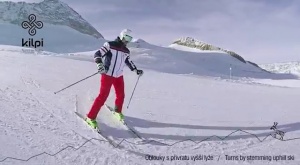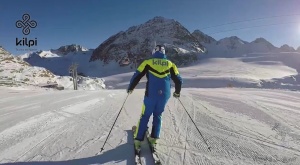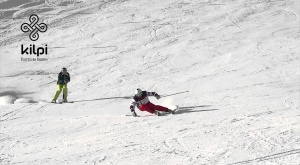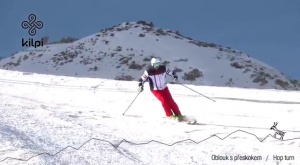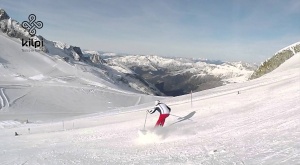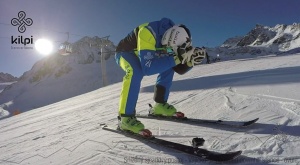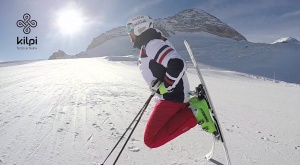 Manipulations, turnovers, hikes
Manipulations, turnovers, hikesTurns by stemming uphill ski
Purpose of the turn:
- Speed riding control
- Moving the weight from over one ski to over the other
- Vertical movement
- Setting skis on edge
- Transitional phase to parallel turns
Terrain:
- Mild slope to moderately steep slope
Description:
Turns by stemming uphill ski serve as a transitional phase towards teaching parallel turns. They also enable us to manage challenging snow and terrain conditions. Stemming will make the passing of skis over the fall line, and we also can control the speed. Turns are commonly used in difficult snow conditions, poor visibility, and at riding with a load, but also for transporting an injured person down.
Phase I. – We start facing across a slope. We push the tail of uphill ski to stemming while fluently perform a slight vertical movement upward. Due to the weighting off skis rotate to the next turn (into the fall line).
Phase II. - Then we begin to put our weight on the ski pushed up to stemming (the next outside ski). We set this ski on the inside edge and smoothly shift our center of gravity; our knees are forward and inside the formed turn.
Phase III. - After passing through the fall line, we push weighted off inside ski to the outside ski to a parallel position. This is done by constant lowering the centre of gravity (vertical movement downward) to the lowest position.
Phase IV. - We begin with lifting centre of gravity. After weighting off, the skis cease to turn and we initiate following turn with repeated pushing inside ski to stemming.
The most common errors:
- Backward lean of a skier, or centre of gravity set too back
- Incorrect synchronization of the lower limbs during a turn
- Insufficient weighting ski in stemming
- Quick bringing skis to a parallel position
- Too wide or narrow stemming

